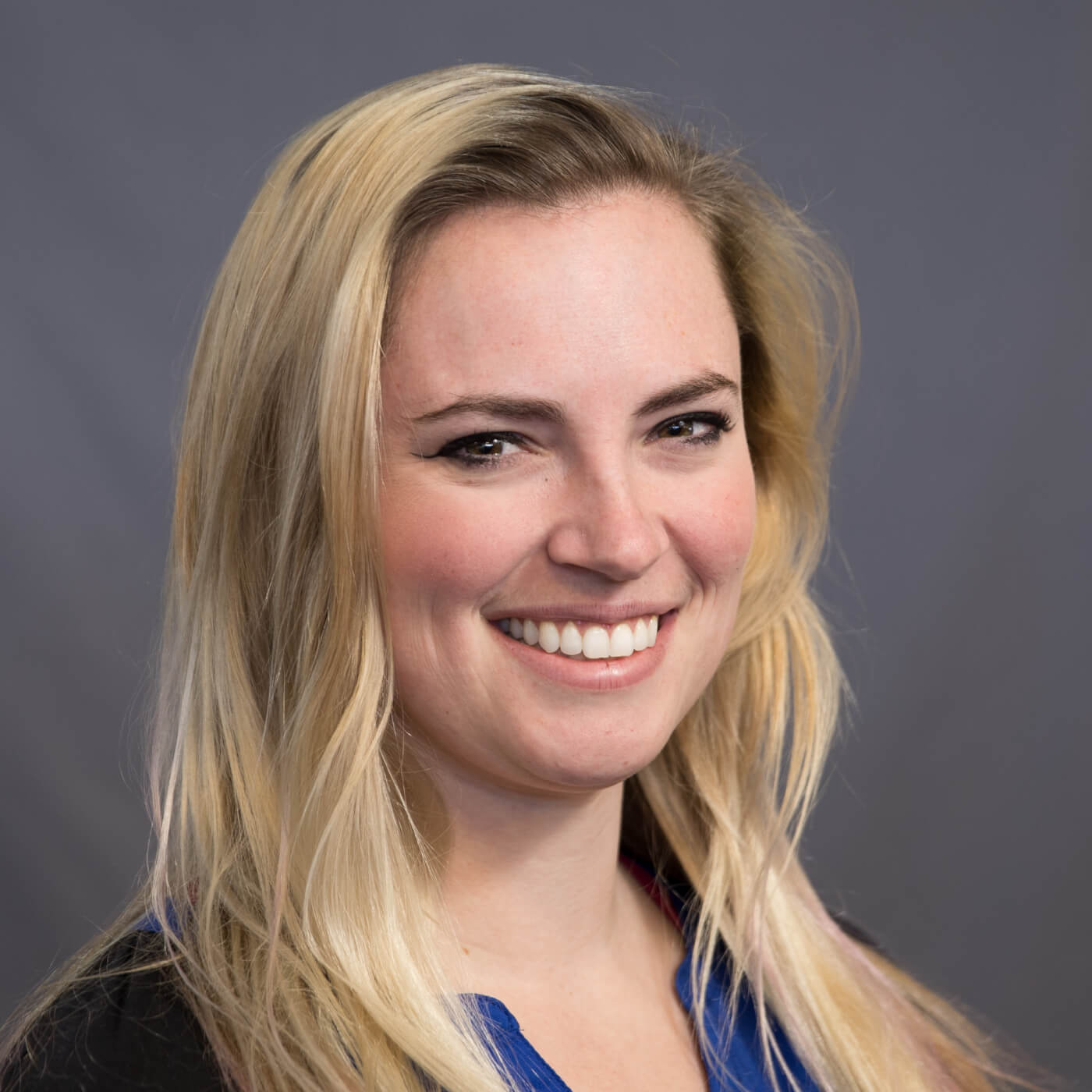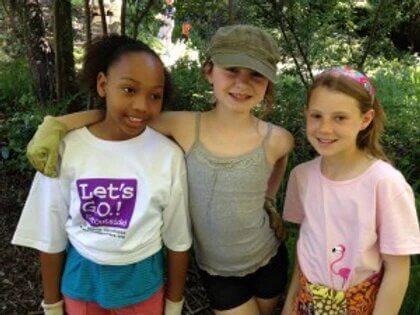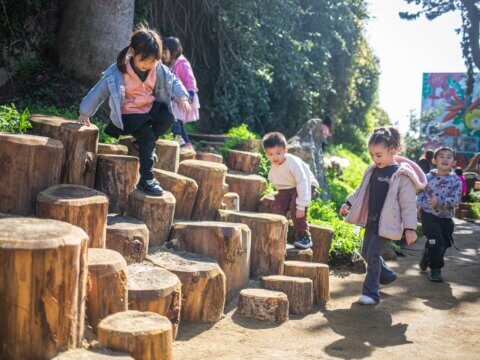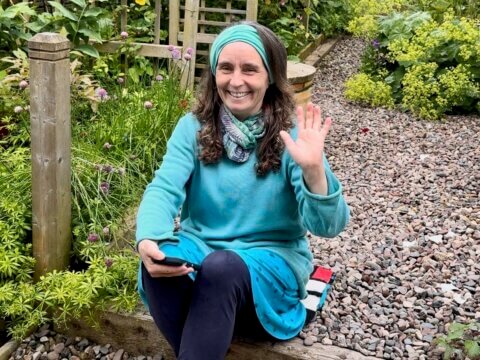Play for all: Breaking barriers to create inclusive childhoods
From inclusive design to equitable opportunities, inclusive play spaces empower every child to explore and connect through play
It’s exciting to finally see play be given the reverence and importance it deserves. As the Inclusive Play Specialist for Landscape Structures, which designs play spaces for children and caregivers, saying “play is critical” often feels like I’m preaching to the choir. But as someone with a disability, I think it’s even more exciting that this statement is shifting to “play is critical for all.” Those two little words open a vast and beautiful world of inclusion, ensuring everyone is invited to the best part of childhood.
I was born with spina bifida and spent my childhood getting around using my crutches, walker or little purple wheelchair. I was a feisty child with a competitive streak and a wild imagination, but often, when it was time to go outside and play at school, I found it daunting, scary and isolating. Being unable to move around on the playground wood chips or struggling to push my chair over the dirt and grass meant I typically stayed in one spot. In fact, my favorite thing to do was to sit in the flower beds by the school door and build elaborate houses for bugs.
On days when I felt particularly energetic, I’d trek across the playground and camp out on a swing seat. While other kids could and would take turns on the swing, I found it too tiring to repeatedly get in and out of the seat, or to stand and wait in line. My muscles fatigued quickly given my disability, so standing and waiting was challenging. However, I often ended up feeling guilty for commandeering the seat for the entirety of recess. So instead, playground time typically meant staying out of the way, moving around very little and feeling like a loner. When someone did play with me, I felt guilty that they were missing out on the chaos and joy of the playground with their peers. Looking back, I realize this challenge had nothing to do with my peers’ desire to play with me — the environment itself didn’t allow me to join in.

Jill Moore smiles from a play space at Robert F. Clement Park in Littleton, Colorado. Photo courtesy of Landscape Structures.
Over time, we’ve learned more about why play is so critical. It helps us develop vital skills like communication, social interaction, emotional regulation and flexible thinking. We generally play at the edge of our skill sets and take risks, which results in learning and feelings of success. Play helps build our physical strength, motor planning and sensory regulation. Play even sneaks in cognitive skill building — all in a way that feels natural to children. As a species, we are truly wired to play.
Arguably, many of the skills that play helps build are even more essential for children with disabilities. Take a child with autism or sensory disabilities — the playground, with its noise, visual stimuli and heat on a warm day can quickly become an overwhelming combination. The child might find themselves quickly dysregulated, melting down, and/or entering a fight or flight response and feeling the need to flee. The goal of any inclusive play space design is to provide users with their “just right” fit. In this case, that would be providing an area to cool down, or an activity like spinning, swinging or climbing that could help the child re-regulate. This means that while all children benefit from a variety of types of play, a child with a disability can depend on it.

Muwékma Park in Sunnyvale, California. Photo courtesy of Landscape Structures.
Additionally, consider social skills. These skills develop through day-to-day interactions and this happens naturally through play. Without equitable opportunities to practice social interactions, children with disabilities can face long-lasting repercussions. Research shows that nearly 85% of adults with disabilities report losing their jobs due to underdeveloped social skills. Inclusive playground design changes this by providing activities that allow children to engage at their own pace while encouraging face-to-face interactions and meaningful play with peers — opportunities I wish I’d had on the playground.
Children with disabilities want to play just like everyone else — we just might approach it a bit differently. Some may need to practice skills a bit more: A child with ADHD may need additional practice building their motor skills or they might hyperfocus on one activity until they’ve mastered the skill. Others may need different types of access, like me as a kid. I was a huge thrill seeker, and while I probably won’t be heading to the tallest climbing structure, I really love an accessible spinner that feels fast and exciting.

The We-Go-Round® facilitates group play for children of all abilities. Photo courtesy of Landscape Structures.
Oftentimes I get asked how to make nature play more inclusive — an awesome question since nature play is so enriching for kids. It’s why I loved my bug hotels in the first place. Being in nature is scientifically proven to be calming and regulating for kids of all abilities. For example, a 2004 study found that “green time” improves working memory in children with ADHD.
To make nature play inclusive, it’s essential to balance natural and man-made elements. Say we’re aiming to support a child who uses a mobility device — nature play opportunities are moot if the child can’t move through squishy mud and thick grass. Having a concrete pathway leading to a transfer point gives children with mobility devices access to main activities while also providing additional stability.

Children play together at Glen Lake Elementary School in Minnetonka, Minnesota. Photo courtesy of Landscape Structures.
When visiting nature play areas, I often find myself relying on compelling activities that are concentrated in one spot. After transferring onto a log or rock, there’s frequently nowhere else for me to go since I’m not climbing or crawling like typical children. This means my “one spot” needs to be either very engaging or near other accessible activities I can gravitate toward. Navigating grass or dirt is manageable only when the ground is dry, as soggy terrain makes movement impossible. Some of the most impactful park spaces I’ve seen strike a balance, combining natural elements with accessible features like spinners or inclusive swings that accommodate mobility devices. This way, even after it rains, I can still enjoy being outside, connecting with nature and engaging in meaningful activities.
Play is a universal language, and its value cannot be overstated. For children of all abilities, inclusive play spaces offer more than just fun — they foster connection, growth and belonging. By removing barriers and providing equitable opportunities, we open the door for every child to experience the joy of play, the thrill of adventure and the confidence that comes from mastering new skills. Whether it’s a quiet moment building bug hotels or the rush of spinning on an inclusive spinner, inclusive design ensures that no child is left out of the magic of childhood.
1 Comment
Submit a Comment
Placemaking: How to build kinship and inclusive park spaces for children with disabilities, a Finding Nature News story
The dignity of risk: Creating a system of care to support children with disabilities in accessing nature, a Finding Nature News story
“Naturally Inclusive” outdoor experiences for children of all abilities, a Finding Nature News story
Research Digest: Children with disabilities
Research Digest: Benefits of nature for children with disabilities
Play has no limit: Inclusive play for all ages and abilities, a guide
Connecting children of all abilities to nature play & therapeutic gardens, a toolkit
Disability Language Style Guide
-
Network News
POLICY UPDATE: Policy and advocacy for the children and nature movement
-
Voices
Binoculars, bald eagles and my journey as a Black birder
-
Richard Louv
THE WONDER BOWL: Ten Spring and Summer Nature Activities for Kids and Adults
-
Network News
Minneapolis Spotlight: The promise and possibilities of parks for youth
-
Voices
Why nature is my motherhood ally







Thank you Jill for sharing your lived experience and for all the work that you are doing to support play for all!!!